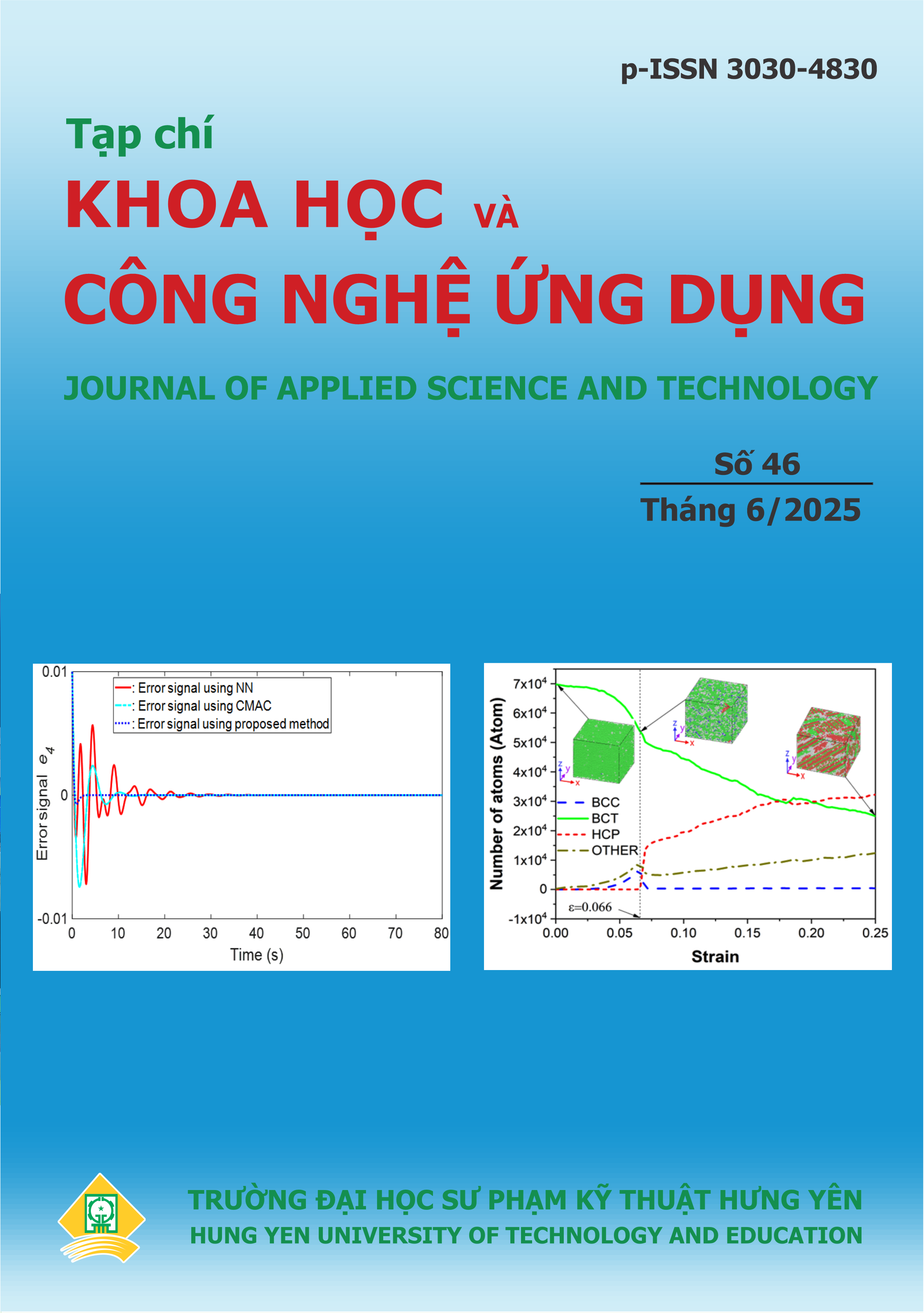OPTIMIZING POWER ALLOCATION ALGORITHM FOR DOWNLINK COUPLINING USERS IN NOMA NETWORKS
Abstract
In this paper, we consider the combination of non-orthogonal multiple access (NOMA) and ratesplitting (RS) in multi-antenna scenario. Specifically, a common signal is generated at the base station (BS) and transmitted with the user’s private signal. By using successive interference cancellation (SIC), the common signal is decoded and removed at each user, and then the private signal can be decoded based on the NOMA scheme. By jointly allocating power and pairing users, a weighted total rate maximization problem is formulated with quality of service (QoS) constraints, in which the priority of different signals is expressed. To solve this problem, a pairing based algorithm is analyzed and proposed. The simulation results show that: 1) the proposed RS-NOMA system outperforms the RS and NOMA systems; 2) the power allocation scenario and user pairing algorithm can improve the RS-NOMA system in terms of weighted sum ratio and outage probability.
References
W. Saad, M. Bennis, and M. Chen, “A vision of 6G wireless systems: Applications, trends, technologies, and open research problems,” IEEE Network, 2020, vol. 34, no. 3, pp. 134–142.
Y. Liu, Z. Qin, M. Elkashlan, Z. Ding, A. Nallanathan, and L. Hanzo, “Nonorthogonal multiple access for 5G and beyond,” Proceedings of the IEEE, Dec. 2017, vol. 105, no. 12, pp. 2347–2381.
Z. Wei, L. Yang, D. W. K. Ng, J. Yuan, and L. Hanzo, “On the performance gain of NOMA over OMA in uplink communication systems,” IEEE Trans. Commun., 2020, vol. 68, no. 1, pp. 536–568.
K. Wang, Y. Liu, Z. Ding, A. Nallanathan, and M. Peng, “User association and power allocation for multi-cell non-orthogonal multiple access networks,” IEEE Trans. Wireless Commun., 2019, vol. 18, no. 11, pp. 5284–5298.
K. Wang, W. Liang, Y. Yuan, Y. Liu, Z. Ma, and Z. Ding, “User clustering and power allocation for hybrid non-orthogonal multiple access systems,” IEEE Trans. Veh. Technol., 2019, vol. 68, no. 12, pp. 12 052– 12 065.
Z. Ding, P. Fan, and V. Poor, “Impact of user pairing on 5G nonorthogonal multiple access downlink transmissions,” IEEE Trans. Veh. Technol., 2015, vol. PP, no. 99, pp. 1–1.
S. M. R. Islam, M. Zeng, O. A. Dobre, and K. Kwak, “Resource allocation for downlink NOMA systems: Key techniques and open issues,” IEEE Wireless Commun., Apr. 2018., vol. 25, no. 2, pp. 40–47.
A. Haghi and A. K. Khandani, “Rate splitting and successive decoding for gaussian interference channels,” IEEE Trans. Inf. Theory, 2021, vol. 67, no. 3, pp. 1699–1731.
H. Liu, T. A. Tsiftsis, K. J. Kim, K. S. Kwak, and H. V. Poor, “Rate splitting for uplink NOMA with enhanced fairness and outage performance,” IEEE Trans. Wireless Commun., 2020, vol. 19, no. 7, pp. 4657– 4670.
J. Wang, Q. Peng, Y. Huang, H. Wang, and X. You, “Convexity of weighted sum rate maximization in NOMA systems,” IEEE Signal Process. Lett., Sep. 2017, vol. 24, no. 9, pp. 1323–1327.
T. Bas¸ar and G. J. Olsder, “Dynamic noncooperative game theory,” SIAM, 1998.
Z. Han, “Game theory in wireless and communication networks: theory, models, and applications,” Cambridge University Press, 2012.
“Spatial channel model for multiple input multiple output (MIMO) simulations, release 17,” 3GPP TR 25.996 V17.0.0 (2022-03), Sept. 2022.
R. Jain, D.-M. Chiu, and W. R. Hawe, “A quantitative measure of fairness and discrimination for resource allocation in shared computer system,” Eastern Research Laboratory, Digital Equipment Corporation Hudson, MA, 1984, vol. 38.

